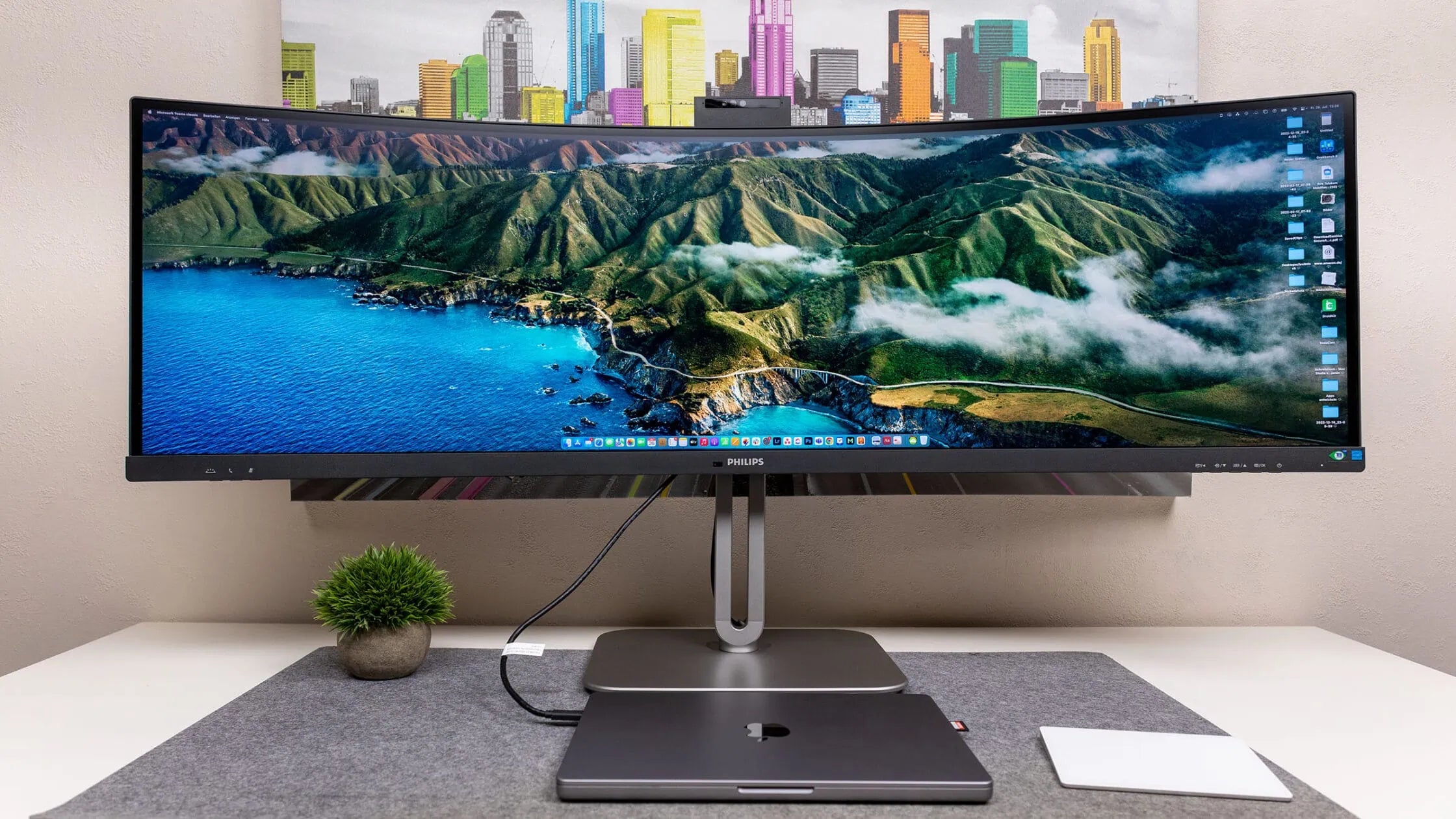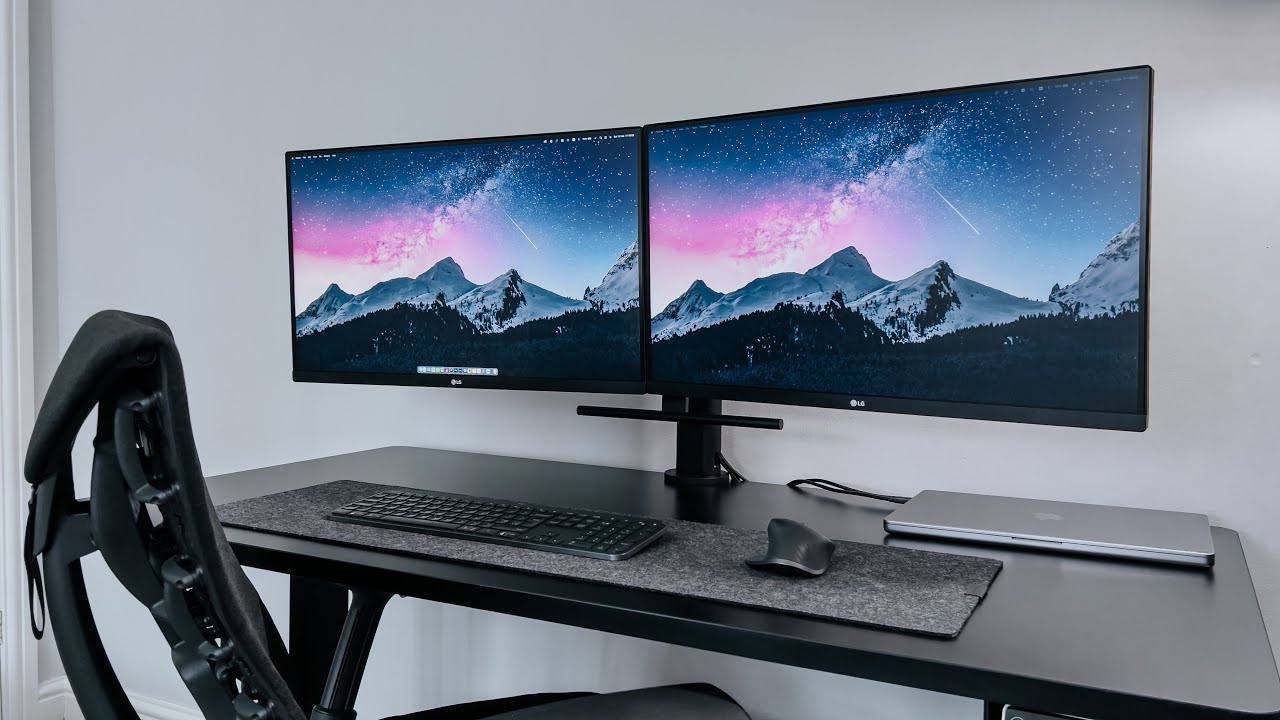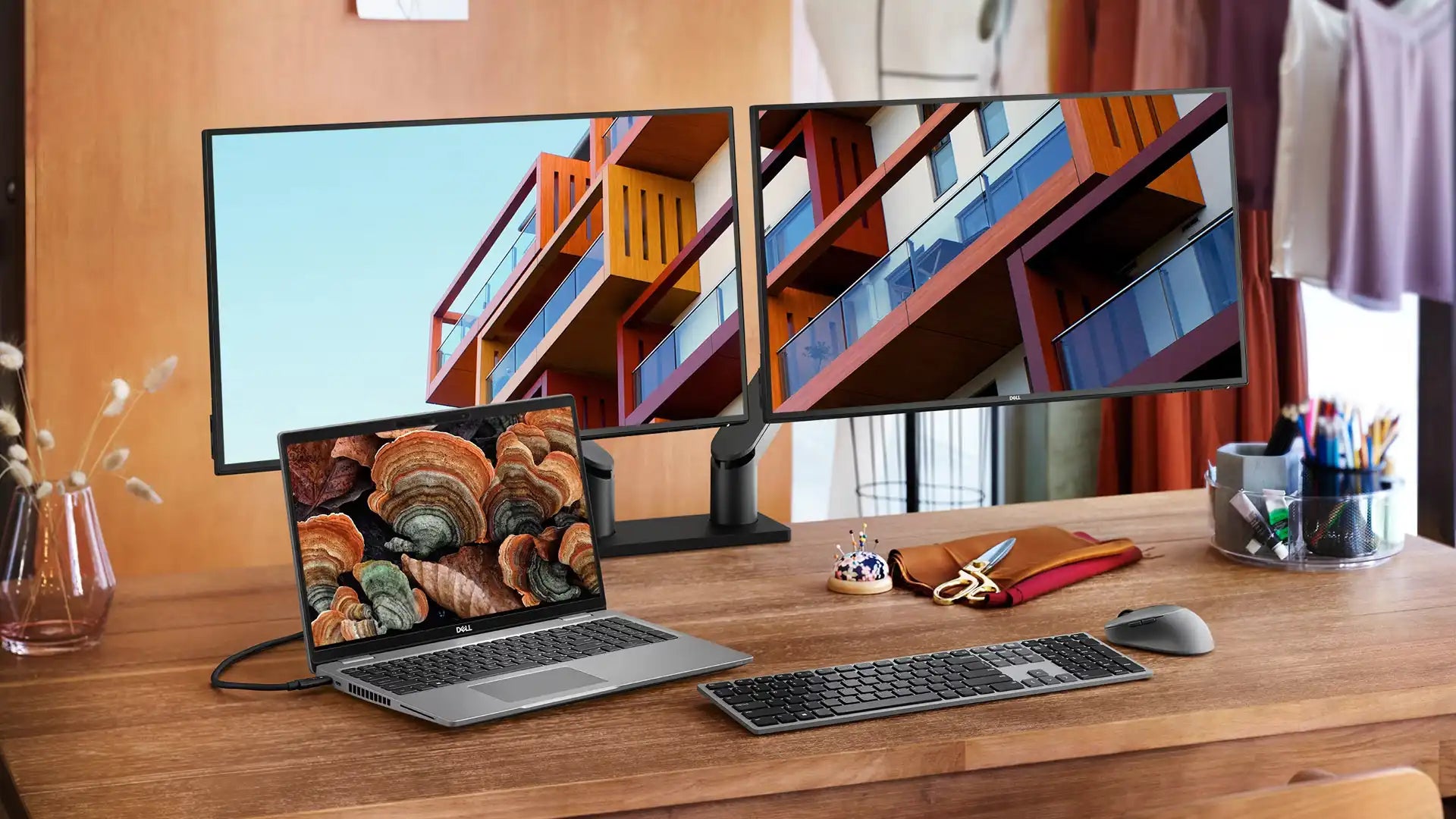When choosing between a VA (Vertical Alignment) and IPS (In-Plane Switching) panel, consider your priorities: VA panels offer better contrast ratios (typically 3000:1 vs IPS's 1000:1), making blacks deeper for immersive viewing, but suffer from slower response times (~5–10ms vs IPS's 1–4ms) and narrower viewing angles. IPS panels provide more accurate colors and wider 178° viewing, ideal for multitasking or design work, though they often cost slightly more and have less contrast. If you prioritize deep blacks and cinematic visuals (like gaming or movies), VA is great; for sharp details and color consistency, IPS wins. Both can have high refresh rates (e.g., 144Hz), so match the panel type to your use case—gaming (VA for contrast, IPS for speed) or productivity (IPS for accuracy).
VA Panel Basics & Pros
A typical VA panel offers a static contrast ratio of 3000:1 to 6000:1, which is 3x to 6x higher than IPS panels (usually 1000:1), meaning blacks look near pitch-black in dark rooms instead of grayish. This is why VA panels are often used in budget to mid-range monitors (24–32 inches, 1080p–4K) and even some TVs, where deep contrast enhances movie or gaming visuals.VA panels have slower response times (5–10ms GTG, sometimes up to 15ms on cheaper models), which can cause minor ghosting in fast-paced games (like FPS or racing), though modern 1ms MPRT (Motion Picture Response Time) VA panels exist but often cost more.
Their brightness usually maxes out at 250–350 nits, which is enough for indoor use (office/home lighting) but not ideal for very bright rooms (where IPS or OLED with 400–1000 nits shine). VA panels also have narrower viewing angles (170°–178° horizontally/vertically, but colors shift slightly at extreme angles), so they’re best viewed straight-on—fine for solo gaming or office work but not great for group sharing. On the upside, VA panels retain color accuracy decently well (sRGB coverage 90–95% on average, AdobeRGB 70–80%), and their pixel response is smoother for non-gaming tasks (like browsing or office apps).
Here’s a quick breakdown of VA panel specs and real-world performance:
-
Contrast ratio: 3000:1 to 6000:1 (IPS: 1000:1, OLED: infinite) → blacker blacks, better for dark scenes
-
Response time: 5–10ms GTG (1ms MPRT possible, but rare) → slight ghosting in fast games, fine for casual play
-
Brightness: 250–350 nits (IPS: 300–400+, OLED: 1000+) → decent for dim to normal lighting
-
Viewing angles: 170°–178° (colors shift at edges) → best for single-user setups
-
Color accuracy: sRGB 90–95%, AdobeRGB 70–80% → good enough for non-professional work
-
Typical use: 24–32 inch monitors, 1080p–4K, budget to mid-range (300) → great value for contrast-focused users
VA panels are most popular in 27–32 inch 1440p or 4K monitors (like Samsung’s Odyssey or Dell’s S-series), where their high contrast makes HDR content pop (even if not true HDR, just better blacks). They’re also common in budget gaming monitors (144–165Hz refresh rates, but response time still a limiter). If you don’t play competitive shooters and want a more cinematic experience (movies, single-player games, general use), VA is a smart pick under $250.
IPS Panel Key Features
IPS panels maintain color accuracy within 2–3% Delta E (Delta E < 2 is professional-grade) even at extreme 178° viewing angles, meaning colors don’t shift when you shift your head—a huge deal for designers, photographers, or anyone editing photos/videos. Their typical static contrast ratio is 1000:1 (same as most VA panels, but worse than OLED/VA high-end models), but they compensate with better brightness (300–450 nits, peak HDR up to 600–1000 nits on premium models), making them more visible in well-lit rooms.
Speed-wise, IPS panels now dominate the 1ms–4ms GTG (Gray-to-Gray) response time range, with 144–240Hz refresh rates standard in gaming models (like LG UltraGear or ASUS ROG Swift). That’s 2–3x faster than budget VA panels (5–10ms), reducing ghosting in fast-paced games (CS2, Valorant, or racing sims). But IPS isn’t perfect—it suffers from "IPS glow" (a faint backlight bleed in dark scenes, especially at angles), and while black levels are decent (not as deep as VA’s 3000:1 contrast), they wash out faster in pitch-black rooms.
Here’s a detailed spec comparison to break it down further:
|
Feature |
IPS Panel (Average) |
VA Panel (Average) |
Why It Matters |
|---|---|---|---|
|
Response Time (GTG) |
1–4ms (144–240Hz common) |
5–10ms (165Hz max usually) |
Faster IPS = less ghosting in games |
|
Viewing Angles |
178° (no color shift) |
170–178° (minor shift) |
IPS wins for shared screens/multi-angle use |
|
Contrast Ratio |
1000:1 (max) |
3000–6000:1 (max) |
VA = deeper blacks, IPS = brighter whites |
|
Brightness (nits) |
300–450 (HDR up to 1000+) |
250–350 (rare HDR) |
IPS better for sunny rooms |
|
Color Accuracy (Delta E) |
<2 (premium), 2–3 (standard) |
3–5 (standard) |
Lower Delta E = more accurate colors |
|
sRGB/AdobeRGB Coverage |
sRGB 98–100%, AdobeRGB 80–90% |
sRGB 90–95%, AdobeRGB 70–80% |
IPS = better for professional work |
|
Typical Price Range |
500 (27–32 inch) |
300 (same sizes) |
IPS costs ~20–30% more for similar size |
IPS panels also dominate the professional monitor market (like Dell UltraSharp or Eizo ColorEdge), where 99% sRGB/AdobeRGB coverage and factory-calibrated Delta E < 2 are standard. For gamers, IPS is the top pick for competitive titles (low input lag + fast response), but if you hate glow or need deeper blacks, VA might suit you better. Their average lifespan is 50,000–70,000 hours (same as VA, but no burn-in risk like OLED), and they consume ~20–30W power (similar to VA, less than OLED).

Contrast & Color Showdown
VA panels absolutely crush IPS in static contrast ratio (3000:1 to 6000:1, with some high-end models hitting 8000:1), meaning blacks appear deeper (closer to true black) because the liquid crystals tilt vertically to block more light. In real-world terms, a 6000:1 VA panel in a dark room will show blacker shadows in movies or games than a 1000:1 IPS panel (which looks more grayish). However, IPS panels compensate with better peak brightness (300–450 nits standard, up to 600–1000 nits on HDR models), making them more visible in well-lit environments (like offices or sunny rooms) where VA’s lower brightness (250–350 nits) struggles.
Most IPS panels cover sRGB 98–100% (perfect for web/content) and AdobeRGB 80–90% (good for professional print work), while VA panels typically manage sRGB 90–95% and AdobeRGB 70–80%—decent, but not studio-grade. That said, IPS panels can suffer from "IPS glow" (a faint backlight bleed in dark scenes, especially noticeable at angles), which VA avoids entirely. VA panels, meanwhile, excel in contrast-driven content (like movies or games with dark themes) because their 3000:1+ contrast makes blacks feel more immersive.
Here’s how the numbers shake out in practical scenarios:
-
Dark Room Viewing (Movies/Games): VA’s 3000:1–6000:1 contrast creates deeper blacks and more pronounced shadows, enhancing atmosphere in dark scenes (e.g., horror games or noir films). IPS’s 1000:1 contrast makes blacks look grayer, but its higher brightness (300–450 nits) reduces eye strain in dim but not pitch-black rooms.
-
Bright Room Viewing (Office/Daylight): IPS’s 300–450 nits (up to 1000+ nits on HDR models) keeps content visible even with glare, while VA’s 250–350 nits often requires dimmer lighting to avoid washed-out blacks.
-
Color-Critical Work (Design/Photo Editing): IPS’s Delta E < 2 (premium) and sRGB 98–100% coverage ensures accurate reds, blues, and skin tones, crucial for professionals. VA’s Delta E 3–5 and sRGB 90–95% is fine for casual use but not precise enough for high-end editing.
-
Gaming (Fast-Paced vs Cinematic): IPS’s 1–4ms response time eliminates ghosting in shooters (CS2, Valorant), while VA’s 5–10ms (or 1ms MPRT) is slower but fine for single-player games where contrast matters more.
Gaming & Daily Use Tips
For competitive gaming (like Fortnite, CS2, or Overwatch), IPS panels are the clear winner with 1–4ms GTG response time and 144–360Hz refresh rates (standard in gaming models like ASUS ROG Swift or Alienware AW2723DF). These specs reduce motion blur and ghosting by 30–50% compared to VA’s 5–10ms (or even 15ms on budget models), giving you a clearer edge in fast-paced shooters where split-second reactions count.
For general daily use (browsing, office work, or media consumption), IPS is more versatile due to its 178° viewing angles (no color shift when sharing your screen) and 300–450 nits brightness (better for well-lit rooms). VA panels, while slightly cheaper (usually 300 for 27–32 inch 1080p–4K models), suffer from narrower angles (170–178° but with slight color washout at extremes) and dimmer max brightness (250–350 nits), making them less ideal for bright offices.
Here’s a quick breakdown of gaming performance by panel type:
|
Feature |
IPS (Gaming Models) |
VA (Gaming Models) |
Impact on Gaming |
|---|---|---|---|
|
Response Time (GTG) |
1–4ms (1ms MPRT common) |
5–10ms (1ms MPRT rare) |
Faster IPS = less ghosting |
|
Refresh Rate |
144–360Hz (standard) |
60–165Hz (rarely 240Hz) |
Higher FPS = smoother gameplay |
|
Input Lag |
1–3ms (near-instant) |
2–5ms (slightly higher) |
Lower lag = quicker reactions |
|
Contrast Ratio |
1000:1 (standard) |
3000–6000:1 (superior) |
VA = better dark scene detail |
|
Viewing Angles |
178° (no shift) |
170–178° (minor shift) |
IPS = better for multi-monitor setups |
|
Brightness (nits) |
300–450 (HDR up to 1000+) |
250–350 (rare HDR) |
IPS = better for sunny rooms |
Daily Use Recommendations:
-
For office/productivity work (Excel, Word, browsing): IPS is better due to wider viewing angles (no color shift when leaning back) and higher brightness (reduced eye strain in bright rooms).
-
For media consumption (Netflix, YouTube): VA panels deliver more immersive dark scenes (TV shows/movies with night settings) but struggle in well-lit rooms.
-
For mixed use (work + gaming): If you play competitive games, go IPS (1ms–4ms response); if you only play story-driven games, VA’s contrast is fine.
Final Tip: If you’re on a budget (250), a 27-inch 1440p VA panel (144–165Hz) is great for casual gaming and work. If you prioritize speed and brightness, spend 400 on an IPS 144–240Hz model. Neither is perfect, but matching the panel to your use case ensures the best experience.
Price & Final Advice
When it comes to cost, VA panels generally win on budget-friendliness, with 27–32 inch 1080p or 1440p models starting as low as 200 (like Samsung S24F350 or AOC 24G2), while IPS panels in the same size range typically cost 300 (like Dell S2721DGF or LG 27GL83A-B). For 4K resolution, VA monitors (32 inch, 60–144Hz) range from 400 (Samsung U32H850 or ASUS TUF Gaming VG32VQ), whereas IPS 4K monitors (like LG 27UP850 or Dell U2723QE) start at 500.
Here’s a quick cost comparison by use case:
-
Budget Office/General Use (1080p, 60–75Hz):
-
VA: 180 (e.g., AOC 22V2H, BenQ GW2480) → best value for basic tasks
-
IPS: 220 (e.g., Dell P2422H, ViewSonic VA2432-H) → slightly better colors/brightness
-
-
Mid-Range Gaming (1440p, 144–165Hz):
-
VA: 300 (e.g., Acer Nitro XV272U KV, MSI Optix G272QPF) → good contrast, 5–10ms response
-
IPS: 350 (e.g., ASUS TUF Gaming VG27AQ, LG 27GL83A-B) → faster 1–4ms, 144–165Hz
-
-
High-End Gaming/Multitasking (4K, 144Hz+):
-
VA: 450 (e.g., Samsung Odyssey G7, ASUS TUF Gaming VG32VQ) → high contrast, but slower response
-
IPS: 600 (e.g., LG 27GN950-B, Dell UltraSharp U3223QE) → better colors, 1ms–4ms, HDR support
-
Final Recommendations (Based on Your Needs):
-
Pick VA if: You want deep blacks for movies/Single-player games, don’t mind slightly slower response (5–10ms), and need a cheaper 1080p–1440p monitor (under $250). Best for casual gamers, budget buyers, or dark-room media consumption.
-
Pick IPS if: You prioritize fast response (1–4ms), wide viewing angles, and accurate colors for gaming, design work, or bright offices. Willing to spend 500 for better speed and brightness. Ideal for competitive gamers, professionals, or mixed-use scenarios.
Pro Tips:
-
For gaming, match response time to your genre:
-
Competitive (FPS/RTS): IPS (1–4ms) > VA (5–10ms)
-
Story-driven/Cinematic: VA (3000:1+ contrast) ≥ IPS
-
-
For work: IPS (wider angles, better brightness) is better for office/productivity, while VA is fine for budget setups.
-
Check refresh rate: 144Hz minimum for smooth gaming, 60Hz is fine for office use.
-
Don’t overspend: A 300 IPS or VA panel covers 90% of users’ needs—only pay more for niche use cases (4K HDR, 240Hz, etc.).
Bottom Line: VA offers better contrast for less money, but IPS delivers faster performance and colors worth the extra 150.
Weiterlesen

For general office tasks like documents and spreadsheets, VA panels are a good choice due to their high static contrast ratio (typically 3000:1), which delivers deep blacks and reduces eye strain i...

When selecting an IPS display, prioritize 5 key factors: a high 100% sRGB color gamut for accurate colors, a fast 5ms or lower response time to minimize motion blur, a resolution of 1920x1080 (Full...



Hinterlasse einen Kommentar
Diese Website ist durch hCaptcha geschützt und es gelten die allgemeinen Geschäftsbedingungen und Datenschutzbestimmungen von hCaptcha.